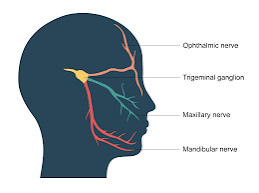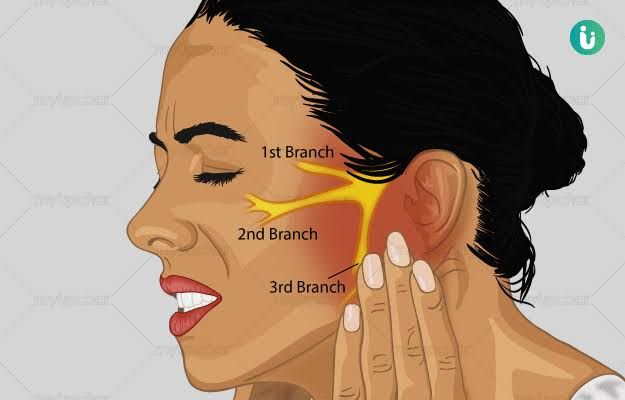Hi everyone, how you doing?. We gonna discuss on an important topic in this post, which is the the most common nerve neuralgia. To be precise, it is the trigeminal neuralgia.
Trigeminal Neuralgia
Trigeminal neuralgia is a severe, sharp paroxysmal pain of unknown cause and etiology which is related to the distribution of the fifth cranial nerve, otherwise known as trigeminal nerve.
It is otherwise called tic douloureux, trifacial neuralgia, Fothergill's disease, suicide disease and so on.
It is usually abbreviated as TN in the currently used and accepted terminology.
One of the things that makes trigeminal neuralgia clinically unique for the physicians is that the syndrome has symptoms that are sufficiently distinctive enough to permit a reliable diagnosis solely on the basis of history
Another thing peculiar to this disorder is that, it has one of the highest causes of suicide rates of any disease due to unbearable and severe pain in the world and as such it is sometimes called suicide disease
Trigeminal neuralgia is generally believed to be encountered by people of old ages which are usually of genders rather than the younger people. Since there were distinct cause of the disorder that has been proven medically there were however some underlying theories and beliefs as regards the cause of the disease though these theories still maintain the idiopathic nature of the disease.
Some these are as follows;
Those that believe it is idiopathic and those that believe that some underlying factors could trigger its emergence.
1- Idiopathic (90% of cases are observed in older age categories)
2- Causative Factor (10% of cases are noticed in younger age categories)
Idiopathic
Idiopathic cases are believed to be the most cause of the disorder in older age groups such as 60-70 years ago group.
(i) Some of the causes of TN in older ages were believed to be sclerosed blood vessels pressing and clinging to the trigeminal nerve which eventually leads to demyelination and hyperexcitability of the nerve fibres which on light touch may results in episodes of pain attack.
(ii) Stretching and demyelination of the trigeminal nerve fibres as it passes through petrous part of the temporal bone. The nerve is observed to be larger in the right side. Occur much in females and older age categories.
Causative factors is more of lesser occurrence which has 10% cases in younger individuals.
(i) Multiple sclerosis produces demyelinating plaques which leads to trifacial neuralgia if the affected nerve is the fibers of the trigeminal nerve
(ii) Meningioma (tumour of cerebropontine )or brain tumour precisely could also cause it TN by exerting pressure on the the nerve
(iii) Aneurysm or vascular malformations can also cause TN by pressure exertion.
Clinical Features of TN
1- In terms of gender or sex categories, female are known to have frequent encounter of attacks than males
2- Based on anatomical location, right is more usually attacked as compared to left side. Although it could occur bilaterally but it is rare and occasionally happens.
3- Second and third divisions of the trigeminal nerve are usually attacked with rarely occurrence on the first division
4- TN usually occur at age of 60-70 years of age and rarely occur below 50 years of age.
How does Pain Episodes occur in trigeminal neuralgia?
Pain episodes are usually triggered or initiated by minor sensory stimuli through touch or contact to the areas of the body supplied by the trigeminal nerve. It is usually small areas of the facial skin or few millimetres on the facial under the supply of trigeminal nerve ganglion and its fibres
The areas of the skin which are touched to initiate the paroxysmal pain are called "Trigger Zone"
Trigger Zones are usually stimulated by anything that can lead to touch or physical contact such as eating, talking, shaving, brushing of teeth, washing, showering and even by flow of current of air. In many cases observed touching maybe refractory between the interval of pain attack in which touching of trigger areas won't precipitate the pain.
During history taking the patient points finger to the trigger area by half an inch away to avoid touching it. Therefore, it is clinically called "half an inch finger sign"
Common trigger zones in a patient of trigeminal
neuralgia can be shortened and abbreviated as the word LACE which has the following breakdown as follows;
L- Lip
A- Ala of nose
C- Cheeks
E- Eyes
The post would be halted at this juncture and there would be continuation in the subsequent posts.Thanks for the unalloyed attention and for going through this piece of information up to this juncture of the write-up. It is well appreciated.
Happy Blogging and Reading
Video from JJ Medicine YouTuber




Telegram and Whatsapp